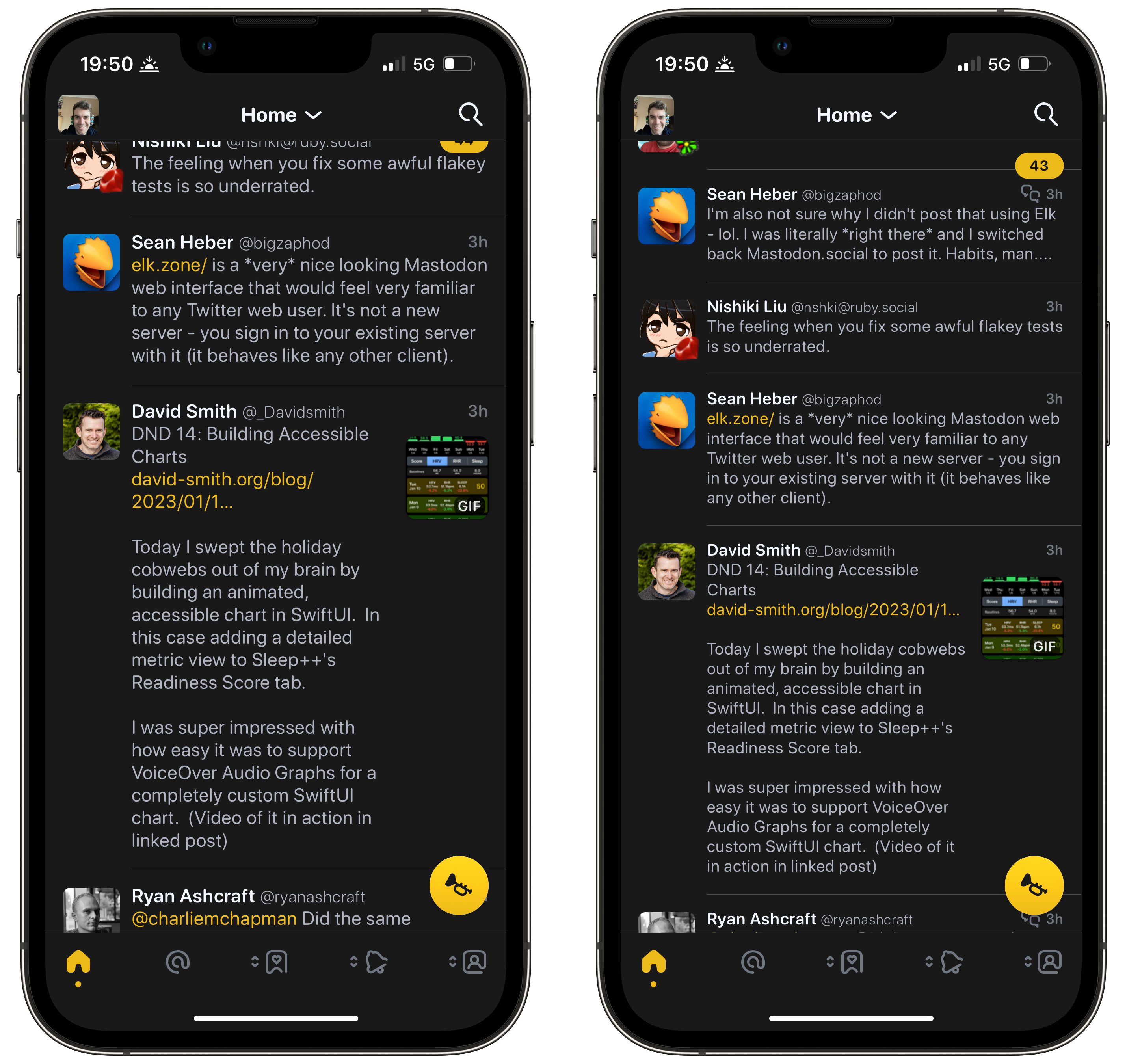Accessibility Affects Everyone
I've had the text size on my phone set as small as possible for as long as I can remember. For one simple reason: to maximise the available space. My close-up vision has always been fine, so this has worked for years now.
A couple of years ago my wife and I had our first child. And my sleep went from 8 regular hours a night, to maybe 6 interrupted hours.
And then we had our second child last year. Now I get maybe 4 hours of interrupted sleep. (Nobody ever talks about how badly children can affect your sleep. It's not just newborn babies!)
What's this got to do with my eyesight? Well, a little while after my first child was born, I started getting occasional headaches. When I spoke to the doctor, they said they often see this kind of migraine due to stress, and lack of sleep. Two things which come with a newborn!
When my second was born, it started happening a lot more often. Sleep and stress are hard factors to control in this situation, so I started looking for anything else which might be connected. And I realised that, when I was more tired, I was straining my eyes more to see my phone screen.
I've since changed my default text size by bumping it up a couple of notches. No more straining my eyes to read when I'm tired. And more importantly, no more headaches.
People often think things like Dynamic Text on iOS are for a minority of users. Accessibility is often an afterthought in apps. But accessibility tools are useful to everyone, in all sorts of unexpected circumstances.
Here's an example of just how different 2 steps in test size can look (tap/click to open in a new tab):
The image on the right gives me headaches. That's not even about ease of use, that's a health issue.
Make sure your apps support Dynamic Text, VoiceOver, and any other accessibility frameworks that are relevant on whichever platform you're working on.
If you liked this article, please consider buying me a coffee to support my writing.
Published on 11 January 2023
